Journal
At Guild Anderson we have enjoyed working and collaborating with OWL Lighting on a number of bespoke kitchen design projects.
OWL Lighting are a family run lighting design company started in 2005, specialising in residential projects. They cover all country houses whether they are listed or contemporary new-builds. Based in Winchester, they work nationwide to create lighting designs for homes as well as gardens, offering both design and technical support.
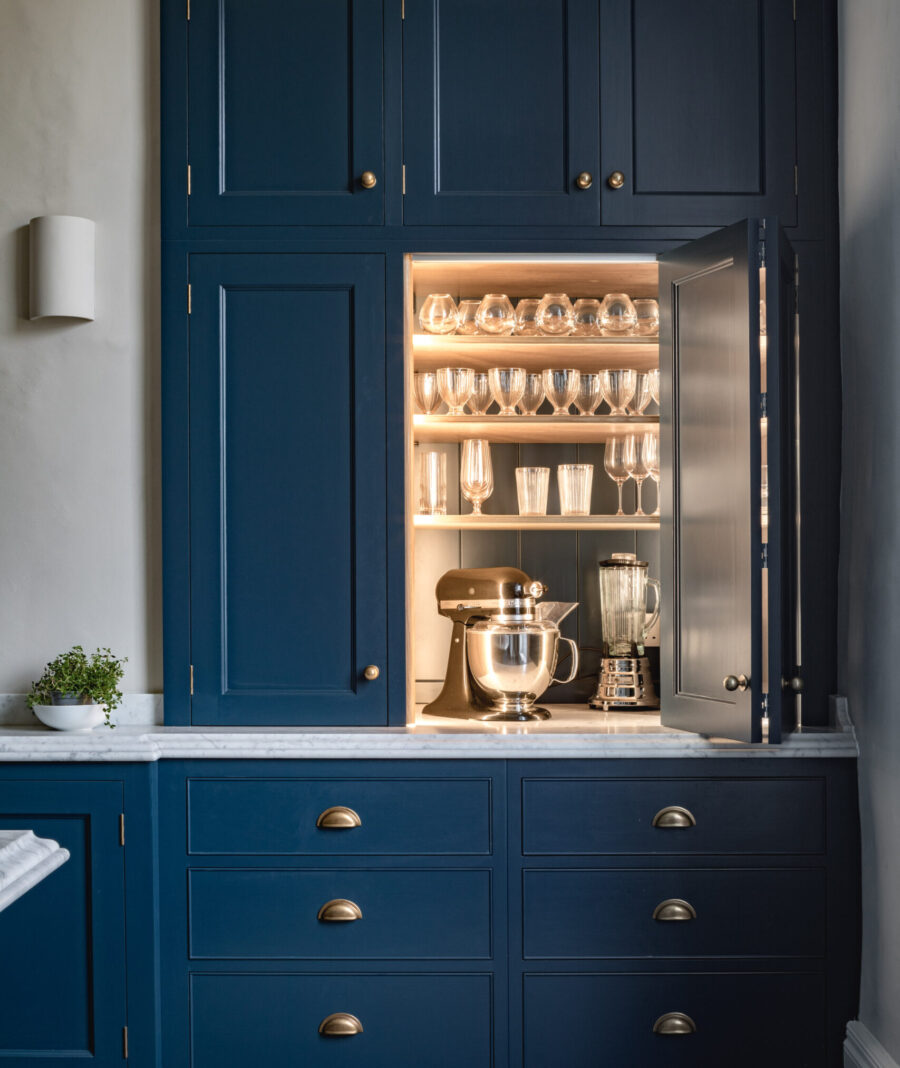
When Sally Stephenson started OWL with her husband and co-director Paul, residential lighting design was a relatively new concept with only one or two other companies in the sector.
At that time Paul ran a technical lighting company and had been involved in the innovation of a range of ‘daylight’ lighting solutions for commercial spaces. He was often approached with residential enquiries and they felt that the time was right for a countryside based specialist home and garden lighting design company.
Although specialising in residential lighting they are occasionally asked to work on interesting residential-like commercial spaces, and usually work on one of those each year.
Owl’s professional approach, dedication & perfectionism make them a pleasure to work with.
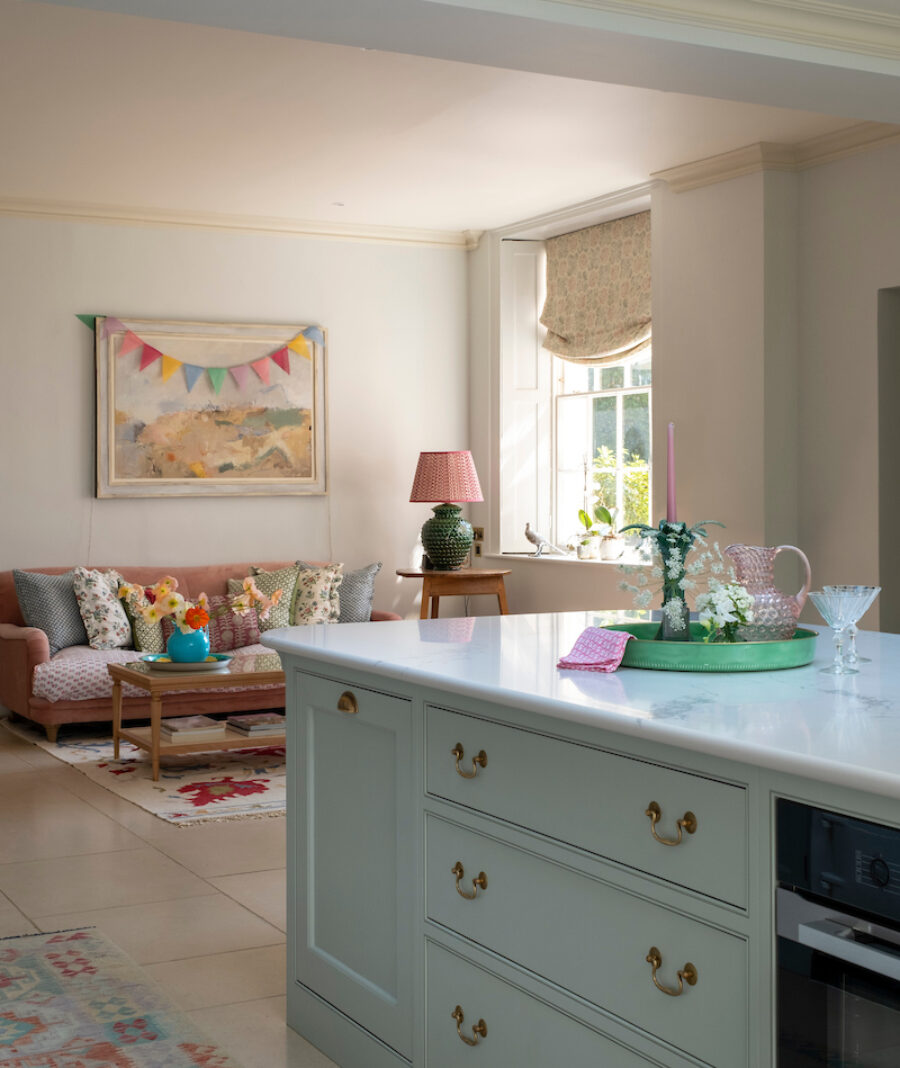
KITCHEN LIGHTING
Knowing how and what lighting to chose for your Guild Anderson kitchen design is an important part of the process. Consideration needs to be taken on the way that the room will be used. Often a kitchen is one of the most used rooms in the house, and with the popularity of open-plan living they now share space with dining tables and sofa areas, as well as office desks and toy and media storage.
Sally is informative in her approach to kitchen lighting; “Kitchens are much more than spaces to cook. I can’t think of a single project we’ve worked on, over the last 18 years that hasn’t included an extended space as a kitchen, living, dining space and sometimes working space. Families spend the majority of their time in these spaces.”
She goes on to say “The starting point is three-fold; who lives in the space? How will it be used? What is the architecture? For these spaces the lighting needs to work extra hard to operate as one space, but also be zoned or controlled so that although there are no walls, the lighting delineates the spaces.”
LIGHTING DESIGN FOR FINE HOMES & GARDENS
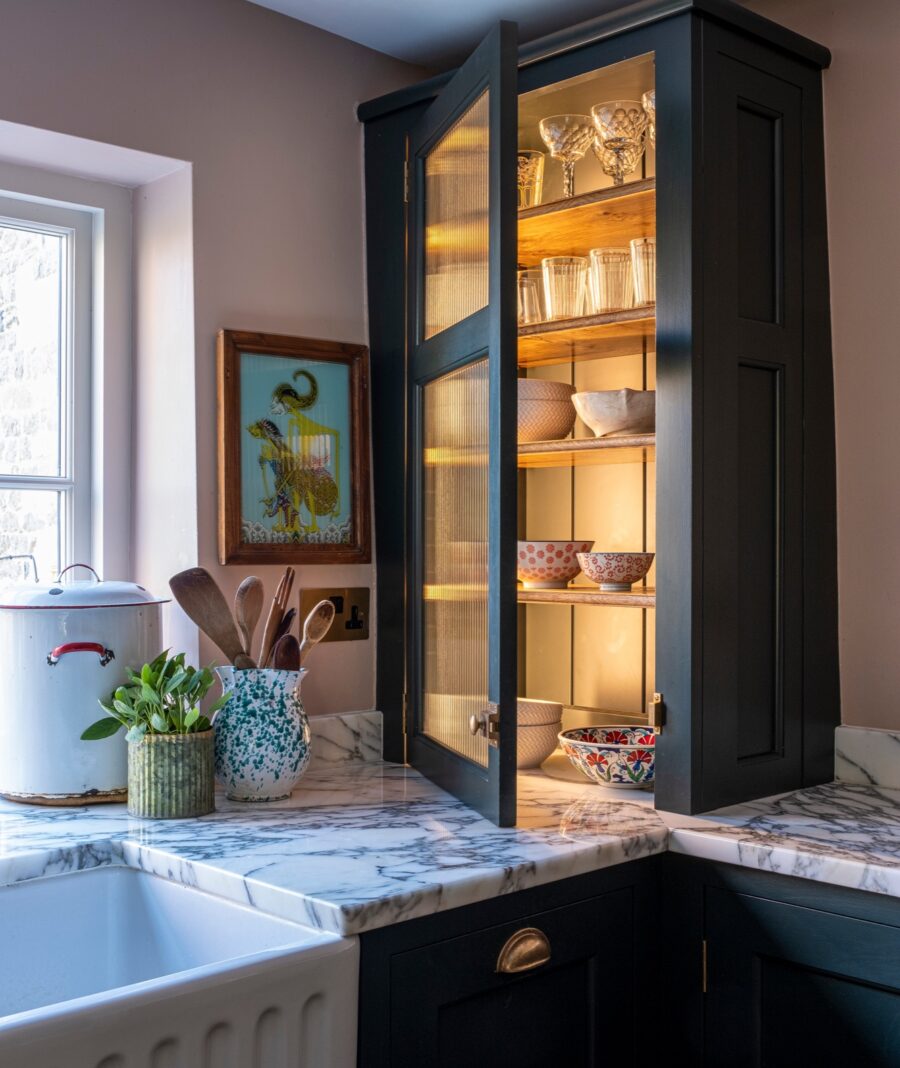
DOWN LIGHTS, TASK AND JOINERY LIGHTING
Down lights are a great option as a starting point as they are a fairly inexpensive way to add a great deal of light. They can come in both fixed and directional formats; allowing you to tilt the lights towards areas that need it most and keep the lights out of your eyes. A room with high ceilings will need less down lights than one with a low ceiling, as the beam of light expands the further it travels from the source, giving greater coverage.
Task lighting in areas of the kitchen such as counters, the range cooker or hob and sink need to be especially well lit for safe and easy preparation, cooking, and other tasks. Task lighting in these areas could be as simple as downlight, but also pendants and wall lights can be positioned to offer the same intensity required.
Sally’s advises “Good task lighting should be positioned carefully to avoid reflections in the work surface. For example we will use the angle of incidence to calculate the spacing and position of any task lighting. It’s important to have enough even light without glare or shadow.”
Under cabinet lighting offers an alternative source of lighting if you want to turn the over head lighting off. If you choose warm bulbs with a diffuser they will offer a warm glow. Positioning the under cabinet lighting at the front concealed behind a lip will light up any equipment such as a coffee machine below it. If you position them towards the back they will light up the splash back or tiles behind.
“Joinery lighting is also an essential element (under cupboard or shelf lighting) and should be treated as part of the overall lighting scheme and not as an afterthought. We want the colour temperature and power to blend with the rest of the lighting in the space.”
Residential lighting projects are a collaboration exemplified by light itself. Light is invisible until it reacts with objects – only the dust in the atmosphere allows a searchlight beam to be seen.
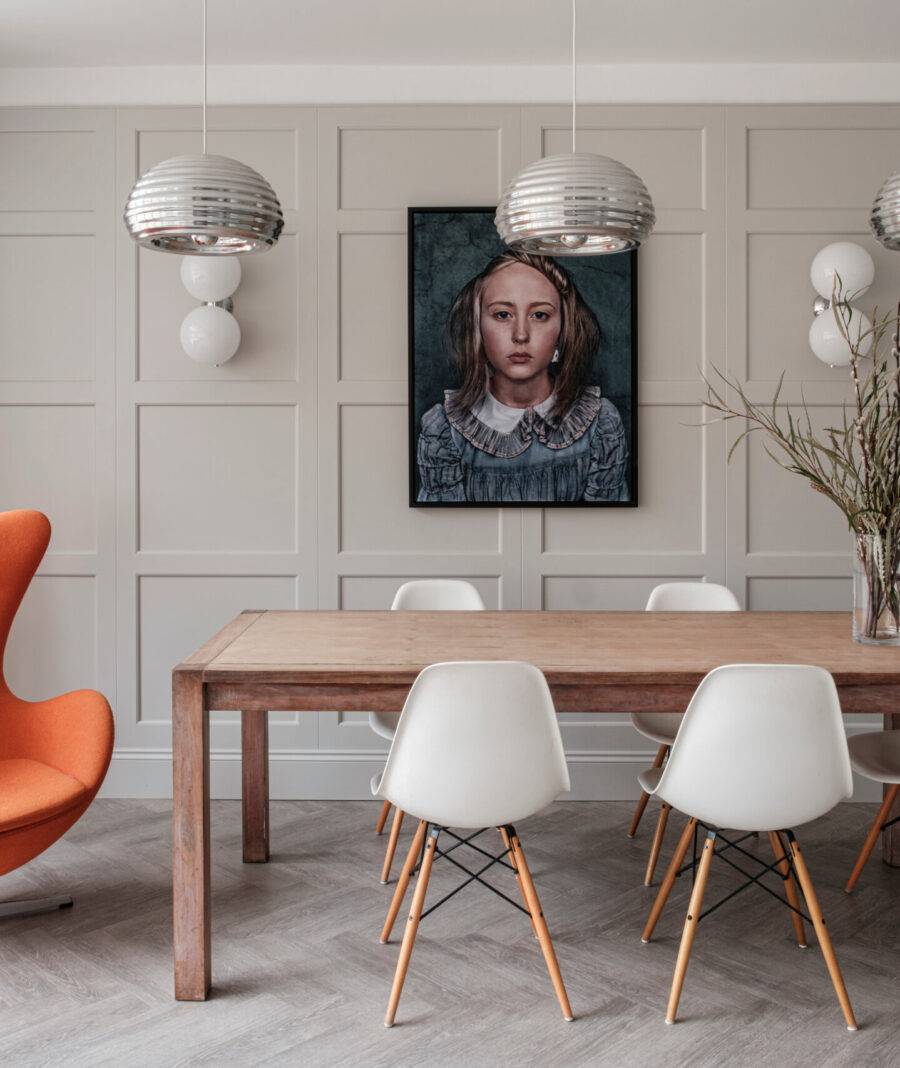
LAYERED LIGHTING
Sally advises to avoid lighting from just one direction, as a room lit only from one source is very uncomfortable to the eye. Look at any features you can light such as paintings which create interest. In the dining area a combination of a pendant light above the dining table, wall lights, and if room allows table lights, will achieve a harmonious feel.
“Most spaces benefit from a combination of architectural and decorative lighting. Both are essential for the balance of a well lit room. Consider how the spaces are zoned, for instance we often use simple control systems in multi-functional spaces, which allows the lighting to be zoned and dimmed to set scenes at the touch of a button.”
Sally suggests always using warm lighting, but there are variations within that. “Each manufacturer will have a different definition of 2700k or 3000k and part of OWL’s expertise is to work with the spaces, the interior design and the product to specify the correct colour temperature for each application resulting in a cohesive scheme that allows the interior finishes to ‘sing’.”
Creating a harmonious balance of task, ambient and accent lighting throughout your kitchen ensures that the final effect is a considered one. Just as the cabinetry, handles, taps and paint colours work together, so should the lighting design.
Lighting design is therefore about interaction with every object and surface and the subsequent reflections and refractions thereafter.
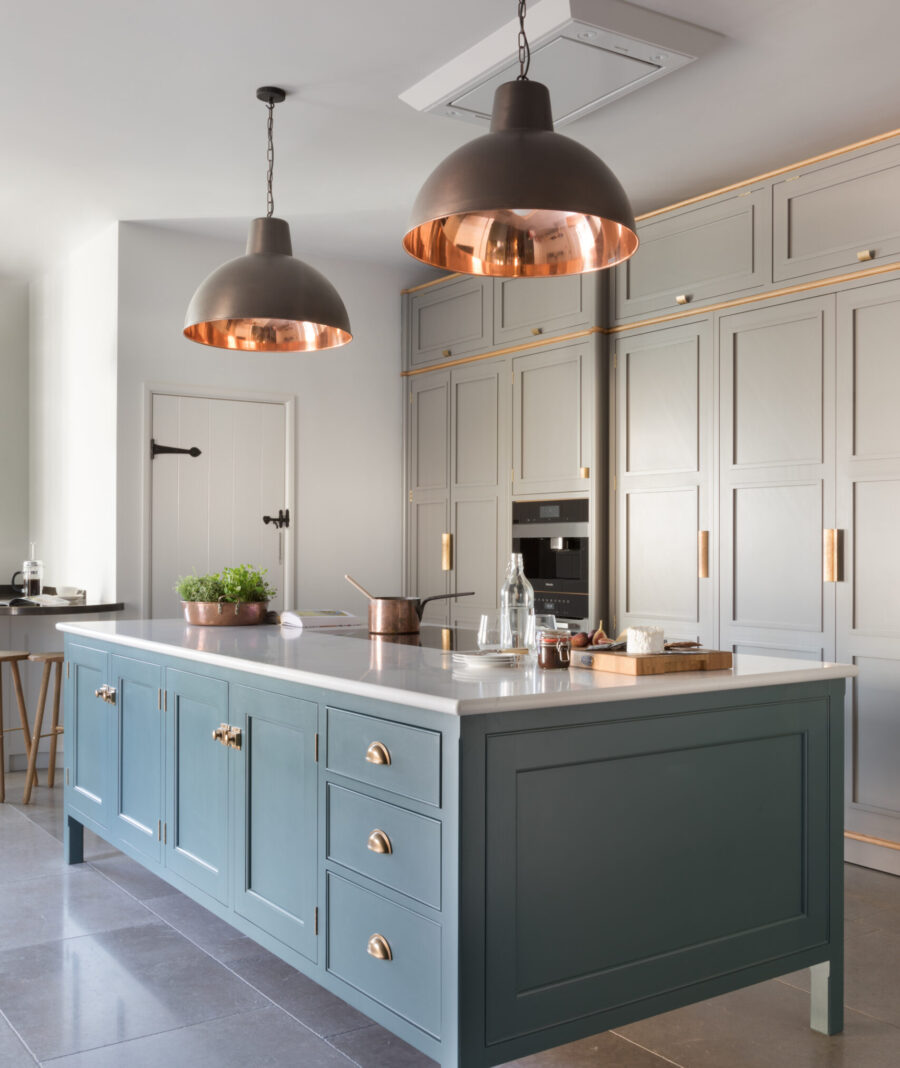
TRADITIONAL OR CONTEMPORARY LIGHTING?
Guild Anderson’s kitchen and cabinetry designs are often commissioned for period properties, but OWL lighting can offer both traditional as well as more contemporary lighting options within a heritage property.
“All OWL designs are bespoke for each client and we work with them to achieve the lighting scheme they require whether classical or contemporary. The type of decorative lighting used within a scheme can often help define the interior style. Classical architecture does not mean the lighting has to be constrained within traditional forms.”
Light switches should also be treated with the same consideration. Switches, toggles, rotary dimmers or smart systems are all things to think about within the design as they will affect the overall look of your room.
Sally’s approach to more traditional lighting projects allows OWL to create bespoke schemes that reflect the building’s unique heritage; “Traditional lighting schemes are primarily dependent on decorative fittings, too much of which can overpower the architecture of a space.”
Sally goes on to say; “Our approach would be to retain some decorative elements, but with more restraint than typical, and then to highlight more of the architecture with accent lighting. Our approach tends to make the architecture dominant and blend the lighting in as much as we can, rather than overpower it.


